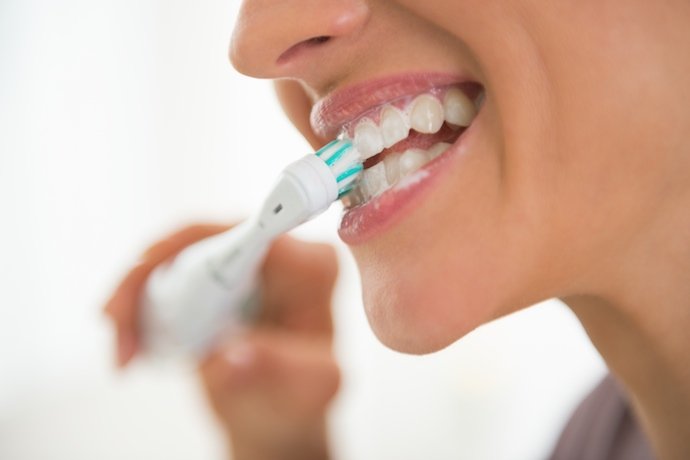
A great oral hygiene routine is much more than just regular tooth brushing. Gum and tongue care is just as important as tooth care, but it is often neglected. A brighter smile requires an all-encompassing oral hygiene routine. Continue reading to find out how you can get to the root of your dental habits and make some positive changes today.
Use mouthwash
Mouthwash has a whole host of positive side effects aside from just freshening your breath. It can add a new dimension to your oral hygiene routine and act as a preventative measure against a wide range of teeth and gum problems. The main function of mouthwash is to rid your mouth of any harmful bacteria. As brushing is ineffective against bacteria, mouthwash is needed to prevent a build-up that can lead to irritation, gum inflammation and even gum disease. These problems can eventually cause tooth loss. Mouthwash can also fight plaque. Plaque is a sticky film of bacteria that is always present on the surface of your teeth. It can destroy tooth enamel and gradually break down teeth if left untreated. Mouthwash may also be able to flush out and remove any remaining debris that your toothbrush has left behind, giving you an extra level of clean.
Chew gum
Chewing sugar-free gum can reduce the levels of harmful bacteria in your mouth. This prevents the build-up of plaque and reduces your chances of developing gum disease. It can also stimulate the flow of saliva around your mouth which can protect your teeth and help replenish tooth enamel. Dentists generally advise those with braces or clear aligners to avoid chewing gum as this can damage the brackets and wiring and disrupt your treatment.
Buy a softer toothbrush
While all toothbrushes do the trick, some may be damaging your teeth and doing more harm than good. Hard-bristled toothbrushes may treat your mouth to a thorough clean, but they can erode the surface layer of your teeth over time. By switching to a soft-bristled toothbrush, you can reduce the chances of your toothbrush gradually chipping away at the surface of your teeth and wearing down on your enamel. Toothbrushes that are too harsh on your teeth may also lead to toothbrush abrasion. This occurs when the teeth are subjected to constant wear and tear over a prolonged period of time. Toothbrush abrasion cannot be reversed but your dentist may be able to repair the affected teeth with fillings. Metal fillings are applied to the grooves of your teeth worn down by excessive brushing and prevents the area from being attacked by bacteria and stray food particles.
Replace your toothbrush
To ensure you are getting the most out of your toothbrush, you must replace it on a regular basis. Most dentists recommend switching to a new toothbrush every 2-3 months, but this should be done sooner if the bristles are starting to fray or detach. You should also replace your toothbrush after you have been ill. Toothbrushes harbour bacteria long after they have been cleaned. A common cold is usually fine but a virus or a cold sore can cause you to become ill again and again.
Brush the back of your mouth
With most people focusing on the front of the mouth, the back is commonly missed. Ensure you are brushing your entire mouth and making an effort to locate those hard-to-reach areas. Just because you cannot see the teeth located at the back of your mouth does not mean they do not require the same level of care and attention. These areas are much more susceptible to plaque and gum disease. By starting your brushing routine in the back of your mouth and working your way forward, you can give your mouth the best possible chance of staying clean.
Floss regularly
Just like mouthwash, flossing is another vital step commonly missed during the tooth brushing process. As well as remembering to floss, you must also floss correctly. It is recommended you begin with at least 18 inches of floss. You must then wind it around both of your middle fingers, leaving up to 2 inches on each side. The floss must be tightly wrapped around your thumb and index finger and gently slid between your teeth. As well as flossing between your teeth, you must also remember to floss beneath the gumline to get rid of any stubborn plaque or food particles.
A good oral hygiene routine is the key to overall health and wellness. Aside from just tooth brushing, your oral hygiene routine should be a multi-step process. By following these tips, you can overhaul your dental hygiene routine and learn to love your smile again.
